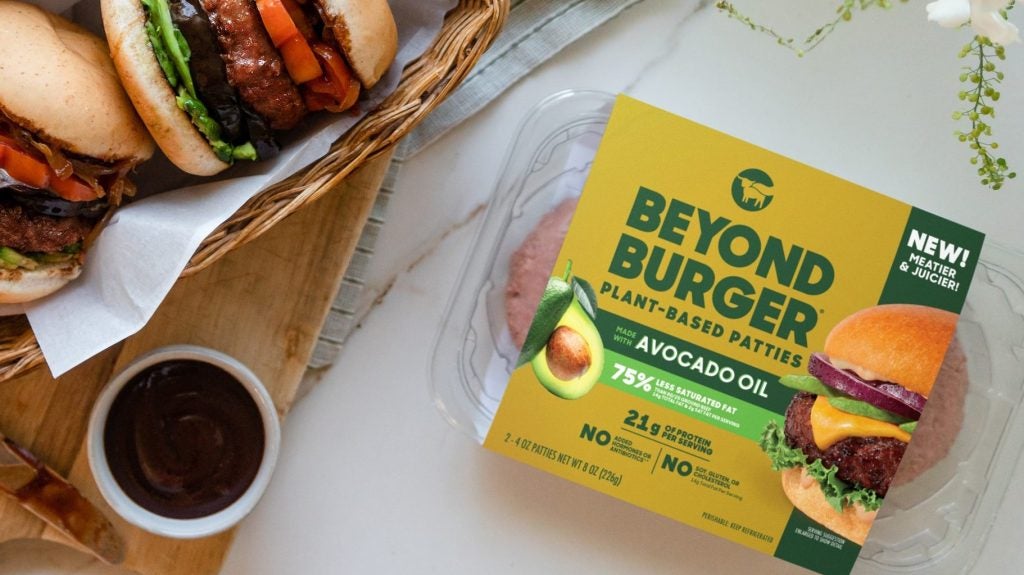Beyond Meat expects gross margins to be supported by US price increases in the back half and a further pull-back in promotional spending.
The group margin improved to 14.7% in the second quarter from 2.2% a year earlier, as price increases were initiated in US retail in April and May, with a fuller roll-out through the rest of 2024 to provide an additional benefit.
“We expect to see further gross margin progress across the balance of the year, reflecting the combined impact of more fully distributed pricing adjustments, continued moderation of promotional spending and ongoing COGS improvements as we consolidate our network and continue on our lean management journey,” founder and CEO Ethan Brown told analysts this week.
However, the outlook for the gross margin across the group in fiscal 2024 was adjusted to mid-teens from mid-to-high teens previously. Beyond Meat also narrowed its revenue guidance range to $320-340m, from $315-345m.
While second-quarter net revenue of $93.2m exceeded the top end of Beyond Meat’s $85-90m expectations, it was down 8.8% from a year earlier, yet another sequential quarterly decline.
Price increases supported a 6.1% rise in revenue per pound, but group volumes dropped 14%. And in Beyond Meat’s largest market of the US, the company noted “weak category demand” in retail, reflected in a 7.5% decrease in revenue and a 23.2% retreat in volumes.
Second-quarter revenue was also down in Beyond Meat’s international retail business (-12.1%) and was 2.5% lower in foodservice.
Retail volumes in the international segment dropped 5.5%, “mainly reflecting reduced sales of chicken products in the EU and, to a lesser extent, demand softness in certain geographic regions”, Beyond Meat said.
International out-of-home volumes were down 1.4%.
CFO Lubi Kutua explained: “If you look at our net revenue per pound this quarter in Q2 in our US retail business, that was up 20.5%. I think one thing that's notable there is that most of that was not driven actually by strict list price increases.
“It was driven by a reduction in promotional spending relative to a year ago, and there was also some benefits from mix. The impact of pricing was not yet impacting that in a major way and we'll benefit from more of that as we go through the year.”
Beyond Meat’s share price rallied on the Nasdaq exchange in the wake of the results, rising almost 25% to close at $6.53 yesterday (8 August), despite the company remaining in the red on the bottom line.
Net loss was $34.5m, compared to a loss of $53.5m a year earlier. Adjusted EBITDA was a loss of $23m versus a loss of $40m.
The shares have declined 20% so far this year and are well off the 2019 IPO price of $25.00. They reached into the high $70.00 area on the market debut in May of that year.
“As consumer macros soften, we remain concerned about the value positioning following price increases, and continue to see downside risk to FY-24 revenue guidance and risks of a capital raise to equity holders,” John Baumgartner, a managing director and analyst at Mizuho Securities, wrote in a follow-up research note.
“Gross margin upside was supported by price increases, but strong volume declines across all segments preserve weakness across the model.”
The California-based business is counting on a boost to sales from this year’s rollout of the latest reformulation of its signature burger, beef and sausage products in US retail, incorporating avocado oil - Beyond IV.
In July, the Beyond Sun Sausage was launched, a product Beyond Meat said is “not intended to replicate beef, pork or poultry” but is intended to serve as an alternative “protein option”.
Beyond Meat is seeking to lower costs and protect cash reserves to right size the business, as well as cutting trade promotions while raising prices.
“These actions are necessary and have fundamentally changed the story for the time being,” wrote Jon Andersen, an analyst at US investment bank William Blair, noting the narrowing in the sales guidance “is generally in line with our going-in expectations”.
He added: “We believe the approach also limits the company’s ability to invest in demand-driving activities, perhaps including efforts to change the narrative around the benefits of plant-based meat.
“We believe the company’s journey to sustained and self-funded growth is likely to be measured in quarters as opposed to months, with the destination still uncertain.”









